In the world of digital marketing, landing pages play a crucial role in converting website visitors into leads or customers. A high-converting landing page is designed to capture the attention of the visitor and persuade them to take a specific action, such as signing up for a newsletter, downloading a free resource, or making a purchase. The goal of a landing page is to guide the visitor towards the desired action, and ultimately, to increase the conversion rate of the website. In order to achieve this, it is important to understand the key elements that make a landing page effective, including design and layout, compelling copywriting, mobile optimization, social proof, and A/B testing. By implementing best practices in these areas, businesses can create landing pages that drive results and contribute to the overall success of their digital marketing efforts.
Design and Layout Best Practices
The design and layout of a landing page are critical factors in its success. A well-designed landing page should be visually appealing, easy to navigate, and focused on the primary call-to-action. When it comes to layout, it is important to keep the page clean and uncluttered, with a clear hierarchy of information that guides the visitor towards the desired action. This can be achieved through the use of white space, contrasting colours, and strategic placement of elements such as headlines, images, and forms. Additionally, the use of directional cues, such as arrows or visual cues, can help draw attention to the call-to-action and guide the visitor towards taking the desired action. Overall, a well-designed landing page should be visually engaging, easy to navigate, and focused on driving conversions.
In addition to design, it is important to consider the overall user experience when creating a landing page. This includes ensuring that the page loads quickly, is mobile-friendly, and is optimized for various screen sizes. A responsive design that adapts to different devices is essential for providing a seamless experience for all visitors, regardless of their device. Furthermore, load speed is a critical factor in user experience and can impact bounce rates and conversion rates. By optimizing images, minimizing code, and leveraging caching techniques, businesses can ensure that their landing pages load quickly and provide a positive experience for visitors.
Compelling Copywriting and Call-to-Action
Compelling copywriting is another key element of a high-converting landing page. The copy should be clear, concise, and persuasive, with a focus on communicating the value proposition and benefits of taking the desired action. Headlines and subheadings should be attention-grabbing and communicate the primary message of the page, while body copy should provide additional details and address any potential objections or concerns. In addition to persuasive copy, it is important to include a strong call-to-action that clearly communicates what action the visitor should take next. This can be achieved through the use of compelling language, contrasting colours, and strategic placement on the page. Ultimately, effective copywriting and a strong call-to-action are essential for guiding visitors towards taking the desired action and increasing conversion rates.
In addition to compelling copywriting, it is important to consider the overall messaging and tone of the landing page. The language used should be tailored to the target audience and speak directly to their needs and pain points. By understanding the motivations and desires of the target audience, businesses can create messaging that resonates with visitors and encourages them to take action. Furthermore, the use of social proof, such as customer testimonials or case studies, can help build trust and credibility with visitors, further increasing the likelihood of conversion. Overall, compelling copywriting and a strong call-to-action are essential elements of a high-converting landing page that drive results and contribute to the overall success of digital marketing efforts.
Optimising for Mobile and Load Speed
In today’s digital landscape, mobile optimization is essential for creating high-converting landing pages. With an increasing number of users accessing websites on mobile devices, it is crucial to ensure that landing pages are responsive and provide a seamless experience across all devices. This includes optimizing for various screen sizes, ensuring that all elements are easily accessible and readable on mobile devices, and providing a smooth navigation experience. Additionally, load speed is a critical factor in mobile optimization, as slow-loading pages can lead to high bounce rates and decreased conversion rates. By optimizing images, minimizing code, and leveraging caching techniques, businesses can ensure that their landing pages load quickly on mobile devices and provide a positive user experience.
In addition to mobile optimization, it is important to consider load speed when creating high-converting landing pages. A fast-loading page is essential for providing a positive user experience and can have a significant impact on bounce rates and conversion rates. By optimizing images, minimizing code, leveraging caching techniques, and using content delivery networks (CDNs), businesses can ensure that their landing pages load quickly and provide a seamless experience for visitors. Furthermore, load speed is also a critical factor in search engine optimization (SEO), as Google considers page speed as a ranking factor. By prioritizing load speed in the design and development of landing pages, businesses can improve their search engine rankings and drive more organic traffic to their website.
Social Proof and Testimonials
Social proof is a powerful tool for increasing trust and credibility with visitors and can have a significant impact on conversion rates. By showcasing customer testimonials, case studies, reviews, or social media endorsements on a landing page, businesses can provide evidence of their value proposition and build trust with visitors. Social proof helps alleviate any concerns or objections that visitors may have and provides reassurance that taking the desired action will lead to positive outcomes. Additionally, social proof can help create a sense of urgency or FOMO (fear of missing out) by demonstrating that others have already benefited from taking the desired action. Overall, social proof is an essential element of high-converting landing pages that helps build trust with visitors and increases the likelihood of conversion.
In addition to social proof, it is important to consider the overall user experience when creating high-converting landing pages. This includes ensuring that the page loads quickly, is mobile-friendly, and provides a seamless experience for visitors. A responsive design that adapts to different devices is essential for providing a positive user experience across all devices. Furthermore, load speed is a critical factor in user experience and can impact bounce rates and conversion rates. By optimizing images, minimizing code, leveraging caching techniques, and using content delivery networks (CDNs), businesses can ensure that their landing pages load quickly and provide a seamless experience for visitors.
A/B Testing and Analytics
A/B testing is an essential practice for optimizing high-converting landing pages and improving conversion rates over time. By testing different variations of elements such as headlines, images, copywriting, call-to-action buttons, or forms, businesses can identify which elements are most effective at driving conversions. A/B testing allows businesses to make data-driven decisions about which elements to include on their landing pages in order to maximize results. Additionally, by leveraging analytics tools such as Google Analytics or heat mapping software, businesses can gain insights into visitor behaviour and identify areas for improvement on their landing pages. By continuously testing and analyzing data, businesses can refine their landing pages over time and improve their overall conversion rates.
In addition to A/B testing and analytics, it is important to consider the overall user experience when creating high-converting landing pages. This includes ensuring that the page loads quickly, is mobile-friendly, and provides a seamless experience for visitors. A responsive design that adapts to different devices is essential for providing a positive user experience across all devices. Furthermore, load speed is a critical factor in user experience and can impact bounce rates and conversion rates. By optimizing images, minimizing code, leveraging caching techniques, using content delivery networks (CDNs), businesses can ensure that their landing pages load quickly and provide a seamless experience for visitors.
Conclusion and Next Steps
In conclusion, high-converting landing pages play a crucial role in driving results for businesses by converting website visitors into leads or customers. By implementing best practices in design and layout, compelling copywriting and call-to-action, mobile optimization and load speed, social proof and testimonials, A/B testing and analytics, businesses can create landing pages that drive results and contribute to the overall success of their digital marketing efforts. Moving forward, businesses should prioritize continuous testing and optimization of their landing pages in order to improve conversion rates over time. By leveraging data-driven insights from A/B testing and analytics tools, businesses can refine their landing pages to maximize results and achieve their digital marketing goals.
Next steps for businesses include conducting an audit of their existing landing pages to identify areas for improvement based on best practices outlined in this article. This may include optimizing for mobile devices, improving load speed, refining copywriting and call-to-action messaging, incorporating social proof or testimonials, or conducting A/B tests to identify which elements drive the highest conversions. Additionally, businesses should prioritize ongoing testing and analysis of their landing pages in order to continuously refine their approach based on data-driven insights. By prioritizing best practices in design and layout, compelling copywriting and call-to-action messaging, mobile optimization and load speed, social proof and testimonials, A/B testing and analytics tools businesses can create high-converting landing pages that drive results and contribute to the overall success of their digital marketing efforts.






